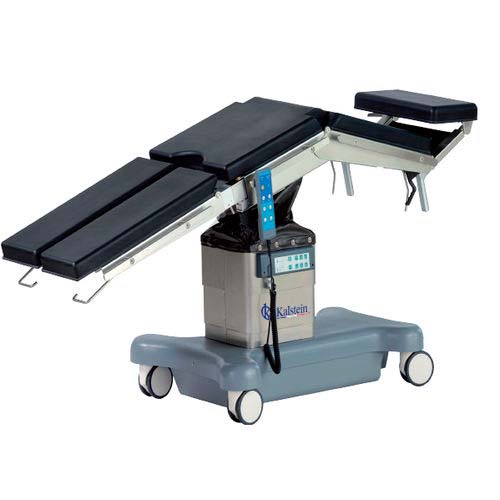For a successful surgical intervention, it is developed in the best way with respect to the correct realization of different positions on the operating table. Each of them needs requirements, both material and human. It is important to provide adequate accommodation for the patient and above all, in order to prevent possible complications of a bad technique in this regard would lead. The surgical team must ensure this objective.
However, the patient’s positioning on the operating table is not given too much importance, this task is fundamental, both to prepare the surgical technique and, this is the most important thing, to avoid future complications from injuries.
Characteristics of an Operations Desk
Usually, the operating tables consist of a stainless steel frame supported by a hydraulic column, can be fixed or movable. The width and weight must be bearable, the model varies depending on the demands of doctors and surgical needs. Similarly, the size of the table will depend on the height of the patient, and the table cushions can be more or less thick depending on the thickness of the padding and should be covered with washable material.
It is important to have a good knowledge of the operating table for a correct positioning of the patient in it. Therefore, the following characteristics must be met:
- Great stability.
- Comfortable.
- Easy access for surgeons to the area.
- Easy mobility.
- Smooth in changing positions and movements.
- Side slide guides, which will allow the placement of accessories.
- Electrohydraulic base allowing movement.
- Lumbar plaque regulation.
- Supports to slide guides.
- Anesthesia arch, legs, side supports, arm support and pads.
- Side supports, to immobilize the patient in the lateral position.
- Pads to support or immobilize.
- In conclusion, to insist that the professional of Surgical Nursing has the obligation to familiarize himself with the operating table with which he works, knowing how he is positioned and all the accessories with which he has.
Standard Measure of an Operations Desk
Firstly, it should be taken into account that doctors need to have the ability to adjust the table to a high or low level, in order to have better access to the part of the patient’s body that is being operated on at that time. In this way, the standard size of the most common tables are:
- 2.10 m long
- 1m wide
- Height between 50 and 90 cm
- Variable length from 200 to 300 cm
Such beds should provide stability within an operating room, and to prevent it from swaying or moving due to the weight or position of the patient, as these constantly change. In addition, the support to be able to function properly. Also, it must meet a special size for patients with obesity. The operating tables used in operating theaters to perform different types of operations, must have a series of accessories that help provide the work of surgeons, as well as provide greater comfort and safety to patients who undergo a surgical procedure. The main accessories that this medical team must have are tweezers, arm boards, patient side transfer devices, fluid handling system, restraint straps, head supports, anesthesia screens
Operations Table brand Kalstein
At Kalstein we have a wide range of operating tables with impressive technology in functional performance, user interaction and operational security make these YR models the most effective solutions. We have ideal operating tables that can be used in general surgery, thoracic surgery, obstetrics and gynecology, orthopedics, urology, brain surgery and otolaryngological surgery.
It has a longitudinal displacement of 350 mm: By adding more space for the C arc in X-ray imaging surgeries, such as cardiosurgery, orthopedics, ERCP, it has alternative pedal control, which provides more convenience and efficiency, especially in laparoscopy and endoscopic surgery.
We are manufacturers, and we offer a variety of operating tables designed with the highest quality, we have the most accessible prices and so you can enjoy your purchase. Review our catalog at HERE Visit our page at HERE

